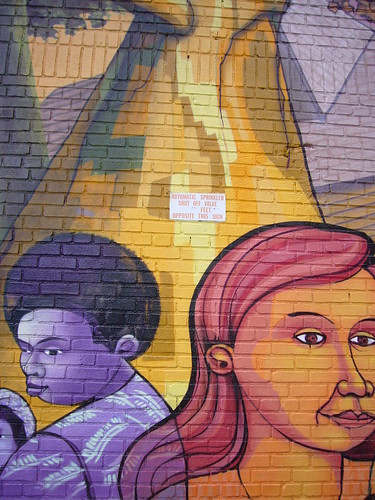
As much as I love looking at urban exploration photo books, I dislike watching urban exploration videos. Or, to put it more succinctly, I anticipate disliking urban exploration videos. Often, the take that I want isn't on the video or DVD (for example, sometimes I'd like for the shot to start with the viewer approaching the building or structure, and the entrance would also be part of the segment as well) and other times, the lack of thoroughness is palpable. I don't experience these shortcomings in still photography related to urban exploration, mostly because I think of the medium as simply showing "snapshots of time".
Echoes of Forgotten Places is an intellectual love letter to urban exploration. The 43-minute DVD has none of the shortcomings listed above, because it doesn't try to recreate the joy of urban exploration firsthand. Rather, it serves as a great introduction of UE, an UE 101, if you will.
There are six chapters, each with a general-sounding title: Forgotten Places, The Record Keepers, Themes and Variations, Places of Work, To Bear Witness, and Endings and Beginnings. Footage of abandoned sites co-mingle with historical black and white film of factory work, modern color film of factory work, and interview segments with urban explorers as viewed on a television screen located in an abandoned site. Many scenes show a person walking around or taking photos as he walks from room to room. There is a lack of exploitation ("Let's talk to the oddballs who like exploring abandoned buildings!"), a rarity in most print articles written on the topic. Even the topic of ethics is addressed directly through interviews with several explorers.
There is a strong message presented, an ode to an industrial time of the past, and a respect for the abandoned sites and slap on society's wrist for not using the sites for current uses respectful of the buildings' history and aesthetics. ("We bury the evidence and build on top of it." "...saddest, most profound places I have ever explored") A historical context is provided but not really expanded upon.
I really appreciated the statement "Being undergound in a place like this tends to focus your attention rather than let your mind wander." This idea is really intriguing and important to me.
Robin Guthrie of Cocteau Twins provides the score, and Leesa Beales plays solo piano. The music is thoughtful and evocative, unlike the horror film music that could accompany the work.
The American-centric 1936 steel industry PR film Steel: A Symphony of Industry is one of the bonus features. (Note that this film is in public domain and can be accessed and viewed here via the Internet Archive.)
The second DVD extra is the "more typical" inclusion of an image gallery, this one including the work of 8 artists from around the world.
Urban explorers might find this video to be too much of a survey to be of much interest, but I highly recommend it for the UE novice or as an overall documentary. International urban explorers might get a kick out of identifying the unidentified places both in the doc and in the image gallery.

No comments:
Post a Comment